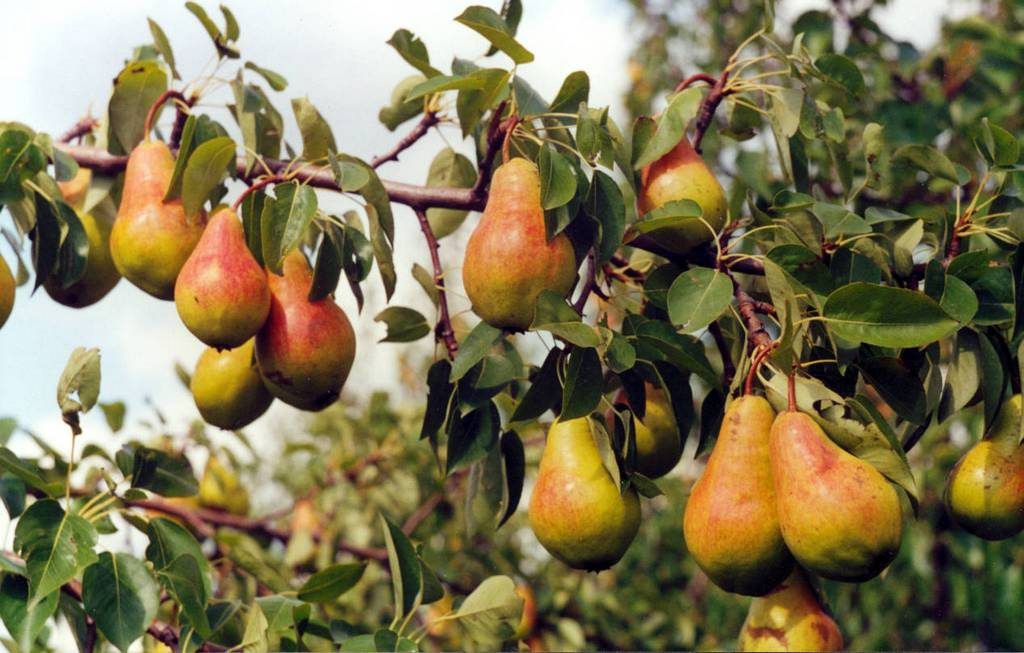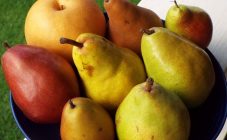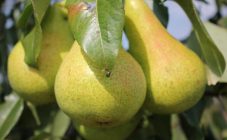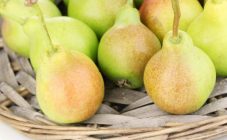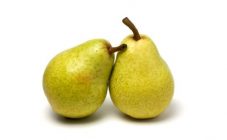Content:
A pear is a tree or shrub with fruits that are shaped like a bulb. This is one of the most ancient plants. Also, the pear is a long-lived tree, the age of some trees reaches 200 years. Ripe pears have an amazing taste and aroma. They are eaten fresh, stewed fruit, preserves, jams, pies filling and dried fruits.
Pears come in different ripening periods:
- Summer (ripen in August, shelf life is no more than a half month);
- Autumn (ripens in September, shelf life is about two months);
- Winter (removed from the tree in October, they should ripen when they are lying down, shelf life after removal is about 4 months).
We'll talk about one representative of winter pear varieties today, this is the Nika variety.
Nick's pear: description
Bred Nika at the Institute. Michurin by a group of breeders: N.I. Saveliev, A.P. Gribanovsky, M.Yu. Bandurko and V.V. Chivilev under the leadership of S.P. Yakovleva. They got it by crossing two varieties: Daughter of Dawn and Talgar Beauty. Having passed all the tests, Nick's pear has been planted since 2002 in the Central Black Earth Region.
Characteristic
The trees are medium-sized, grow no more than 4 m, and also grow at an average pace. The crown is spherical, rare. The skeletal branches that form the frame of the crown have firmly grown together. This is a mixed type of fruiting, fruits are formed on both annual shoots and perennial branches. The color of medium-thick smooth straight shoots is brown. The kidneys are conical, slightly pointed at the ends. Oval, the leaves are deep green. There are almost no denticles on the edge of the glossy sheet. Fruits of average weight - 130 grams, under good conditions grow up to 200 grams.
These pears have a classic shape. The thickness of the skin is medium. The surface of these fruits is smooth, oily, with a very noticeable waxy coating. During removable ripeness (when the stalk is easily separated from the tree, at the slightest touch), the color of the fruit is green with a slightly blurred blush on one side. And when full consumer ripeness comes, the color of pears changes to light yellow with brown splashes on the cover. The pulp is juicy, medium density, milky-creamy. The graininess is almost not felt. These sweet and sour pears have a nutmeg flavor. There is no astringency in the taste.
Fruits are kept on a stalk of average length and thickness. The seeds are conical and brown in color. Seeds are located in closed seed chambers. The yield of this variety is consistently high. Fruiting begins at 5-6 years. The crop is harvested at the end of the third decade of September.
The fruits of this pear are versatile. Suitable both for fresh consumption and for processing: preparation of juice, wine, marmalade and pastille.
This variety is not damaged by scab, bacterial burns and rust, as well as antomosporiosis and clasterosporiosis.
For the prevention of other diseases and pests, it is necessary:
- Apply fertilizers and additives to the soil on time;
- Monitor soil moisture. Fungal diseases develop rapidly in a humid environment;
- Remove diseased branches in a timely manner;
- Dispose of the foliage in the fall and dig up the trunk circle;
- In the spring, process the trunk of the pear with lime.
Growing
Although Nick's pear is a relatively young look, due to the fact that it does not require very much care, it is loved by many gardeners.
Planting and leaving
Pear seedlings should be selected no older than two years old, with a strong healthy root system. Landing pits are prepared in advance. For spring planting, it is better to cook it in the fall. To do this, dig a recess measuring a meter in width, length and depth. The removed soil is mixed with rotted manure, chicken droppings, compost or humus. Wood ash and superphosphate must also be added there. Mix everything well and fill the dug hole. Everything must be left before planting the pear so that all the nutrients are dissolved.
In the spring, you need to dig a hole again, leaving a small mound of fertilized soil in the center. Water abundantly. On this mound, it is necessary to carefully distribute the roots of the pear, cover it with removed earth and lightly tamp it. Drizzle again and add mulch on top.
It is necessary for the first couple of years to make a support near the tree so as not to damage it by gusts of wind.
Watering
Until the pear takes root, it must be watered. Subsequently, watering can be done once a month. You will need about 3 buckets of water per tree. Of course, the weather conditions must be taken into account; in hot dry weather, the number of irrigations should be increased, in rainy weather - reduced. It is necessary to water with water warmed up during the day, and not from the tap. After watering, it is necessary to loosen the near-trunk circle first, and then mulch.
Fertilizers
In the first couple of years after planting, you should not fertilize Nick. And later in the fall, you need to add phosphorus and potash fertilizers. If there is a lack of humus in the soil, after applying mineral fertilizers, it is necessary to lay a mixture of peat with humus in equal amounts. They should be laid in a layer of 20-25 cm around the tree trunk. It is better to add nitrogen in spring for better vegetative growth.
During the autumn digging, the following fertilizers can be added:
- Superphosphate - 30 g;
- Potassium chloride - 15 g;
- Wood ash - 150 ml.
A nutrient solution can be prepared. All components, except ash, must be diluted in 10 liters of water and spilled with the resulting solution around the trunk circle. Before applying top dressing, the pear must be watered using at least 2 buckets per tree.
In the spring, the tree can be fed:
- Urea solution - dilute 100 g in 5 liters of water;
- Ammonium nitrate - dilute 15 g in 5 liters of water;
- Bird droppings - dilute 250 g in 5 liters of water and leave for 24 hours.
The proportions are calculated per tree.
Crown formation
For this variety, crown pruning is very important. All dry, old branches must be cut. Young shoots must be shortened by 10-15 cm. When planting a pear, the branches of a young tree must immediately be shortened by about a third. Thanks to this technique, the crown will be better formed. Pruning should be done annually in the spring, before bud break. Unnecessary shoots must be removed completely, without leaving hemp. If the tree is "started", it will quickly begin to thin out, and the fruits become smaller.
Pollination
Nick's pear is partially self-fertile. But to get high yields, you need to have pollinating varieties nearby. It can be:
- Duchess;
- Firewoman;
- Rogneda.
Preparing for the winter
Although many varieties of winter pears can withstand low temperatures, including Nick's pear, it is better to warm it a little for the winter period. To do this, the trunk must be wrapped in non-woven material or other insulation.
Advantages and disadvantages
Pears of this type have more advantages than disadvantages.
Advantages:
- good productivity;
- frost resistance;
- recoverability after small freezing;
- transportability;
- immunity to disease;
- excellent taste.
There are not many disadvantages, but still there are:
- pollinators are needed;
- the need to constantly form the crown;
- the first harvest has to wait 5-6 years.
The Nika pear has established itself as an unpretentious tree to maintain, which gives a very good harvest both in taste and in quality. Many gardeners speak positively about it and recommend it for planting.

